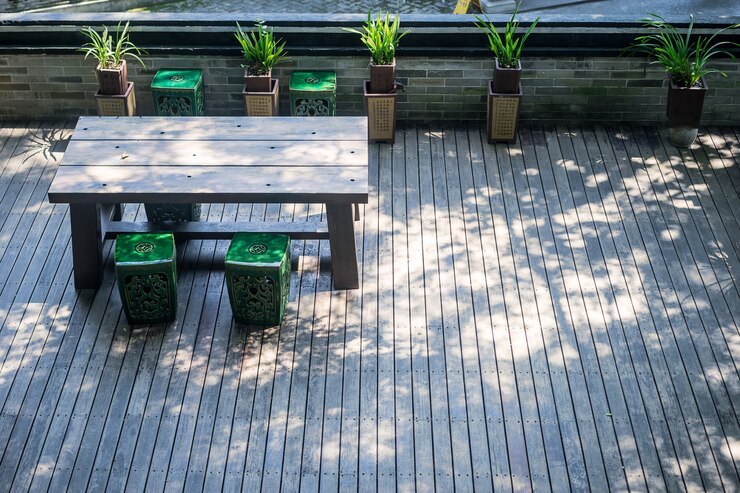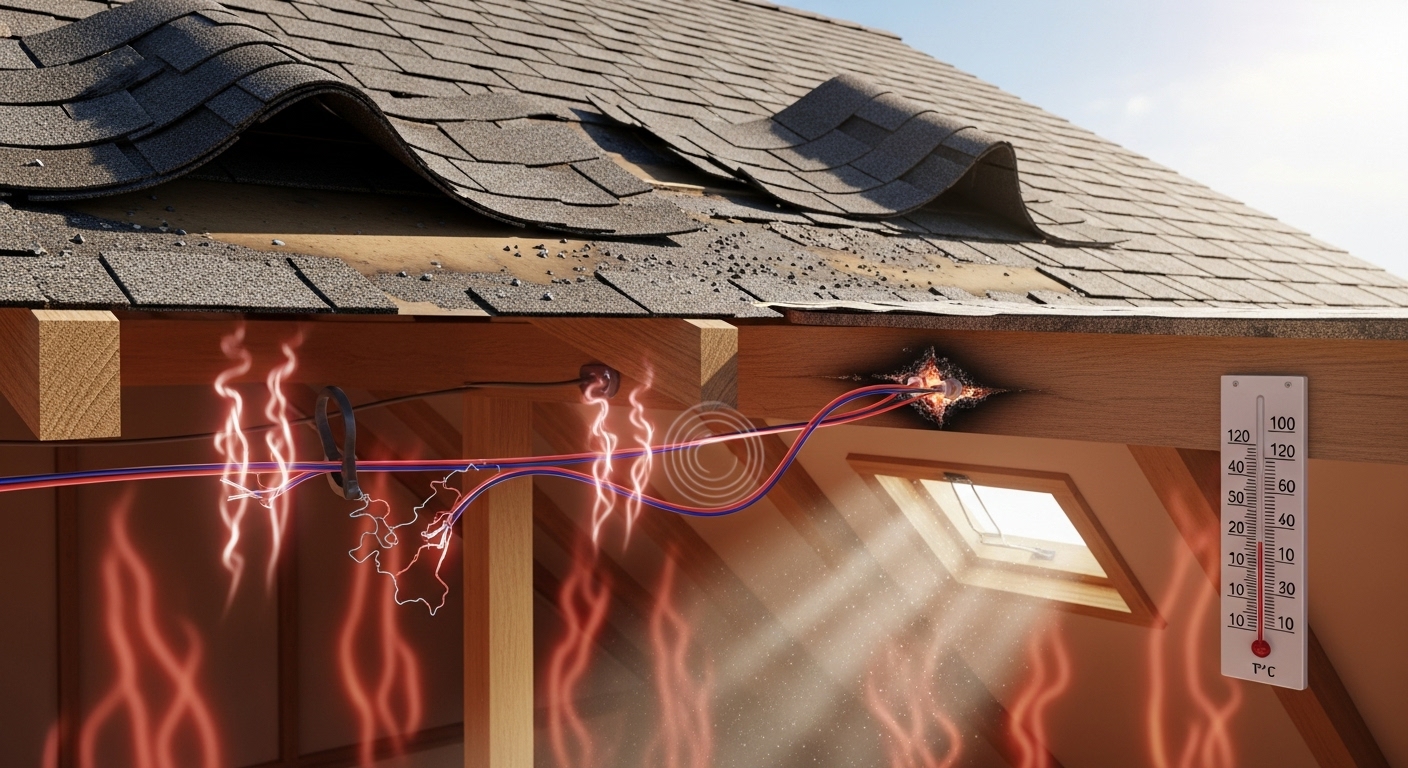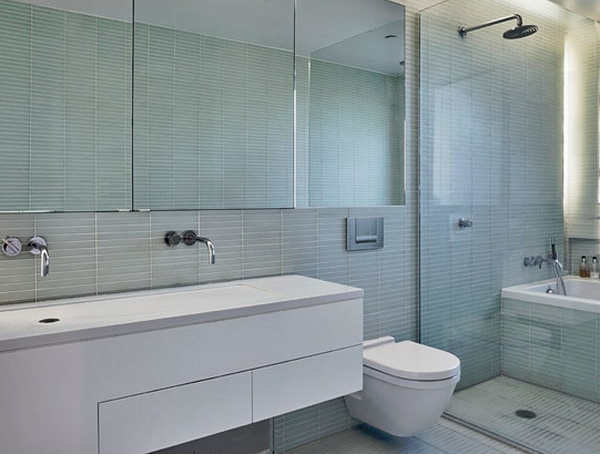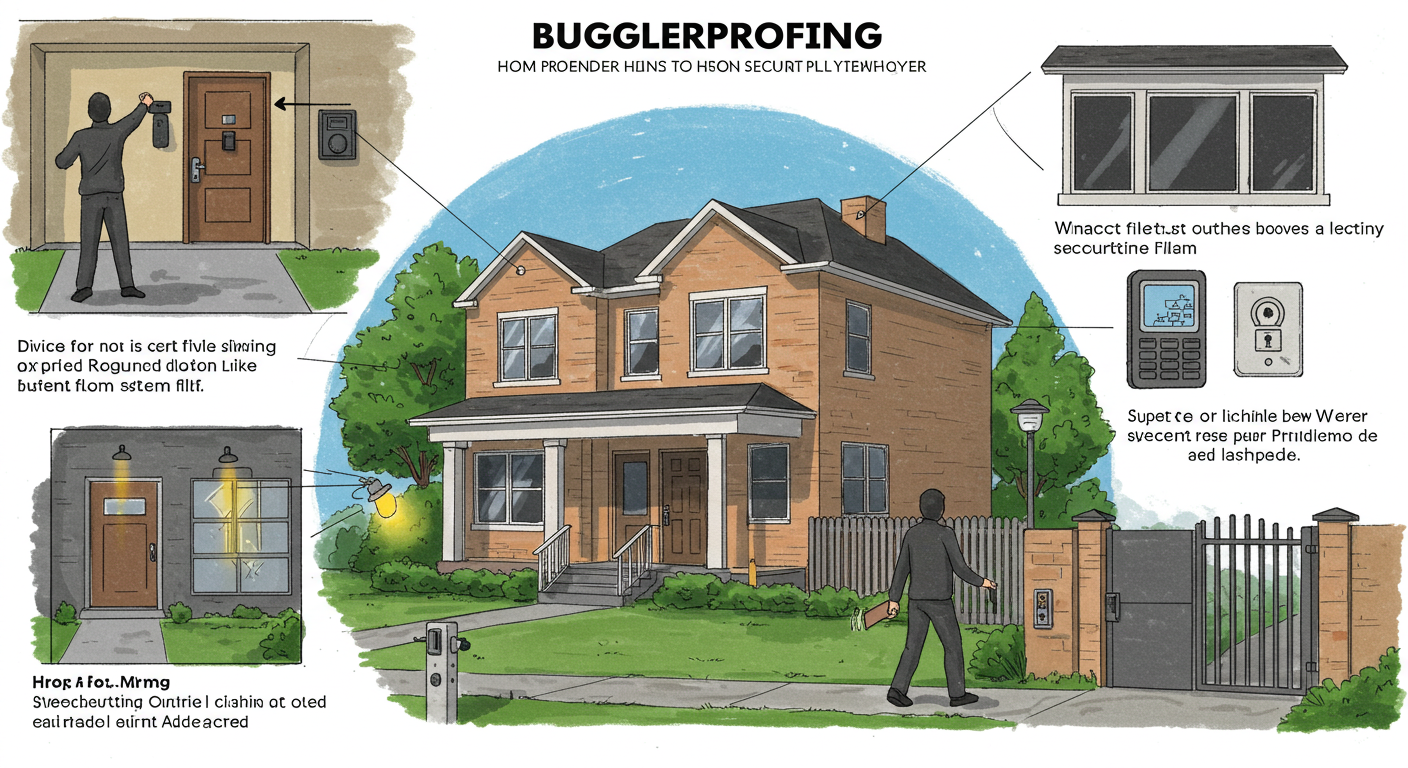Home improvement
Composite Decking Guide: What You Need to Know

You’re envisioning transforming your backyard into a space where you can relax, entertain, and soak up the sun. As you explore your options for decking materials, you come across the term “composite decking” and wonder what it’s all about.
Composite Decking has become increasingly popular in recent years for its durability, low maintenance, and aesthetic appeal. This article will provide you with a comprehensive guide to composite decking.
What is a Composite Decking?
Composite decking is a type of outdoor flooring made from a blend of materials, usually plastic and wood fibers. It’s designed to look like traditional wood decking but offers several advantages.
Because it’s made from a mix of materials, composite decking is more durable and requires less maintenance than natural wood. It’s resistant to rot, insects, and decay, and it comes in a variety of colors and textures to suit different preferences.
Types of Composite Decking
Capped Composite Decking
Capped composite decking is like the superhero of decking materials, offering enhanced durability and protection against the elements. It’s made from a mixture of recycled wood fibers and plastic, just like regular composite decking, but with an added protective layer or cap on top.
This cap is typically made from a durable polymer material that provides extra resistance to stains, scratches, fading, and moisture.
Uncapped Composite Decking
Uncapped composite decking is like the reliable workhorse of decking materials, offering durability and affordability without the added bells and whistles. It’s made from a blend of recycled wood fibers and plastic, similar to capped composite decking, but without the protective cap layer.
While uncapped composite decking may be more susceptible to staining, fading, and moisture absorption compared to capped varieties, it still offers many benefits, including low maintenance, resistance to rot and insects, and eco-friendliness.
Solid vs. Hollow Composite Decking
Solid composite decking boards are dense and heavy, resembling traditional wood decking in appearance and feel. They provide excellent strength, stability, and durability, making them suitable for high-traffic areas and heavy loads.
On the other hand, hollow composite decking boards are lightweight and hollowed out, reducing material costs and weight. While hollow decking may be less sturdy and more prone to sagging or flexing under heavy loads, it still provides adequate strength and durability for most residential applications.
Benefits of Composite Decking
Durability and Longevity
Made from a blend of recycled wood fibers and plastic, composite decking is engineered to withstand the harshest weather conditions, including rain, snow, and UV rays, without warping or splintering. Its durable construction ensures it can withstand heavy foot traffic and resist damage from furniture, pets, and everyday use.
With proper installation and maintenance, composite decking can last for decades, providing a reliable and long-lasting outdoor flooring solution for your home.
Low Maintenance Requirements
Unlike traditional wood decking which requires regular staining, sealing, and sanding to maintain its appearance and performance, composite decking requires minimal upkeep. A simple occasional cleaning with soap and water is all it takes to keep composite decking looking fresh and vibrant year after year.
Resistance to Rot, Insects, and Decay
Unlike natural wood decking, which is susceptible to rotting, molding, and pest infestations, composite decking is engineered to repel moisture and resist insect damage.
Its non-porous surface prevents water absorption, eliminating the risk of rot and decay caused by mold and mildew growth. Additionally, composite decking is impervious to termite attacks, ensuring your outdoor space remains structurally sound and pest-free for years to come.
Eco-Friendly Features
Made from a blend of recycled wood fibers and plastic, composite decking helps reduce the demand for virgin timber and petroleum-based plastics, conserving natural resources and minimizing waste. By repurposing materials that would otherwise end up in landfills, composite decking helps reduce carbon emissions and environmental impact.
Plus, many composite decking brands use environmentally responsible manufacturing processes and offer recycling programs to further minimize their ecological footprint.
Aesthetic Options
Whether you prefer the look of natural wood, sleek modern finishes, or bold colors, composite decking comes in a variety of styles, colors, textures, and finishes to match any aesthetic.
Choose from classic wood grain patterns, contemporary brushed finishes, or vibrant tropical hues to create a custom outdoor space that reflects your personality and complements your home’s architecture. With endless design possibilities, composite decking allows you to bring your outdoor vision to life with style and sophistication.
Considerations When Choosing Composite Decking
Budget
When choosing composite decking, your budget is like a guiding star, helping you navigate through the sea of options to find the perfect fit for your wallet.
While composite decking may have a higher initial cost compared to wood, it often pays off in the long run with lower maintenance and replacement costs. Set a budget that aligns with your financial resources and long-term investment goals to ensure you get the most value for your money.
Color and Texture Preferences
Your color and texture preferences are like the paintbrushes of your outdoor canvas, allowing you to create a customized and visually appealing outdoor space.
Composite decking comes in a wide range of colors, from natural wood tones to bold contemporary hues, as well as various textures and finishes to suit different design aesthetics.
Consider the architectural style of your home, the surrounding landscape, and your taste when choosing the color and texture of your decking material.
Warranty and Guarantees
When selecting composite decking, a warranty and guarantees are like a safety net, providing peace of mind and assurance against unforeseen issues or defects. Check the warranty offered by the decking manufacturer to understand the coverage and duration of protection for your investment.
Additionally, inquire about guarantees for performance and satisfaction, such as money-back guarantees or product replacement policies. Choosing a decking brand with a strong reputation for standing behind its products ensures you’re covered in case of any unexpected issues or concerns.
Installation Requirements
The installation requirements of composite decking are like the instruction manual for assembling a puzzle. Consider factors such as the complexity of the installation process, the level of skill and expertise required, and any special tools or equipment needed.
While composite decking is generally easier to install than wood, it still requires proper preparation and techniques for a professional finish. Decide whether you’ll tackle the installation yourself or hire a professional contractor based on your DIY skills, time availability, and budget.
Have a Composite Decking at Home Now
Whether you’re looking to build a new deck or upgrade an existing one, consider investing in composite decking for a long-lasting and visually appealing outdoor space. Bring the warmth and charm of wood to your home with the modern convenience of composite decking.
Home improvement
How Summer Heat Exposes Hidden Roof and Electrical Problems

The summer sun does not just test your patience; it also challenges your home’s durability. Long-term heat, humidity and UV may bring up issues like breaking roof tiles, overloading of circuits, and dulling of Marble Benchtop surfaces. In the absence of frequent repairs, these problems may easily become expensive to repair. Reroofing is done periodically, and contracting a specialist Electrician Near Me before the summer sets in makes your home safe and makes your stay in a comfortable homestead.
The Hidden Impact of Summer Heat on Your Home
Rising Temperatures Put Pressure on Roof Structures
The severe heat and constant exposure to the sun make the roofing materials swell up and shrink down as the day progresses. In the long run, this movement makes the joints weak, tiles crack, and leaks occur. Broken roofs are also less efficient in insulation, and as a result, the indoor areas may become hotter, as well as raise the costs of cooling. Reroofing before the summer months provides great protection, improved cooling, among other things and savings in energy and repairs are long-term.
Overheating Electrical Systems and Fire Hazards
In summer, air conditioners, refrigerators and fans apply excessive load on electrical circuits. Old wiring and congested switchboards may get hot, posing the danger of a short circuit or fire. Periodic checking and subsequent repairs by licensed electricians near me will ensure that they observe unusual symptoms of stress early enough, to avoid power outage, proper functioning of your system and that it is functioning safely and properly at its peak performance during the summer weather.
Heat and Humidity Affecting Marble Surfaces
During the summer season, the kitchens and the bathrooms tend to be very humid and thus dull the shine of your Marble Benchtop and result in discolouration of the surface. Water percolating through plain marble causes staining and carving. Maintaining ventilation, wiping and using an appropriate sealant before the season commences will save your marble surfaces, even to the point when they are in damp climates, which will keep them shiny and glamorous.
The Best Preventive Solutions for a Heat-Resilient Home
Reroofing to Strengthen Your Home’s Defence
The first line of defence for the home against the harsh summer weather is the good maintenance of the roof. Reroofing is not only used to cover damaged tiles, but also ensures that there is adequate ventilation and insulation. Reflective or light-coloured materials are to be used to prevent the sun from radiating onto your interiors so that your energy bill remains lower. Prophylactic roofing will provide a durable job economically and structurally.
Professional Electrical Inspection Before Peak Season
It is necessary to hire a qualified electrician near me even before summer sets in to get an inspection done. An expert will be able to detect overloaded circuits, faulty wiring or old switchboards before they could be a serious hazard. Maintaining the electrical system allows a constant energy supply, improving energy efficiency, and greatly reducing the chances of short-circuiting or overheating in months with high demand.
Caring for Marble Benchtops Against Summer Moisture
It takes additional precautions for your Marble Benchtop during the wet seasons. Use a quality sealant to prevent water uptake as well as stains. Hot pots or pans should not come in direct contact with the marble surface since the volume of such temperature changes may spoil the surface. Smooth, glossy marble surfaces are maintained without discolouration in summer by frequent cleaning with mild products of a pH-neutral nature.
Final Thoughts – Maintenance Now, Savings Later
Investing in Preventive Care for Long-Term Safety and Value
Summer heat can reveal hidden weaknesses in your home’s structure and systems. Cracked roofs, stressed wiring, and moisture-affected Marble Benchtop surfaces are common issues that often go unnoticed until it’s too late. Proactive maintenance, including timely Reroofing, electrical inspections by an Electrician Near Me, and proper care of marble surfaces, helps avoid costly repairs. Investing in prevention not only protects your home’s safety and appearance but also ensures comfort and efficiency throughout the hottest months.
Frequently Asked Questions
How does summer heat affect roof materials?
Constant sunlight and heat cause roof tiles to expand, contract, and eventually crack. This allows water and heat to enter the home, weakening insulation. Regular maintenance and timely Reroofing prevent damage and improve the roof’s thermal performance during hot months.
When should I plan reroofing for my home?
The ideal time for Reroofing is before late summer or the start of the wet season. Cooler months allow efficient installation, ensuring your roof is structurally sound and ready to withstand extreme heat and seasonal temperature fluctuations.
Why do electrical circuits trip more in summer?
Electrical circuits often trip due to increased energy consumption during summer. Appliances like air conditioners, coolers, and refrigerators demand higher power. Hiring an Electrician Near Me ensures your wiring, fuses, and switchboards are capable of handling the additional electrical load safely.
Can marble benchtops handle summer humidity?
Marble is a porous material, and high humidity can lead to staining or dullness. Regular sealing and proper ventilation help your Marble Benchtop resist moisture. Wiping up spills quickly also prevents etching and keeps your marble looking pristine in humid conditions.
What’s the benefit of early maintenance before summer?
Early maintenance allows you to fix issues before extreme heat worsens them. Whether it’s reroofing, electrical inspections, or marble care, proactive upkeep prevents breakdowns, reduces repair costs, and ensures your home remains safe and efficient throughout the summer season.
Home improvement
Is a Heated Seat Bidet Toilet Safe? Common Misconceptions

Heated seat bidet toilets feature various high-tech functionalities, such as adjustable water temperatures, air dryers, and, of course, heated seats. So, they have gained significant popularity over the years, offering users a more comfortable and hygienic bathroom experience.
However, as with any new technology, safety concerns often arise, particularly for households with children or elderly members.
In this article, we will explore common safety concerns and myths about heated seat bidet toilets, focusing on how they affect households with children, seniors, or individuals with specific needs.

1. Common Misconceptions About Heated Seat Bidet Toilets
Despite their growing popularity, several myths about heated seat bidet toilets still exist. Let’s take a look at some of the most common misconceptions:
- Misconception 1: They Are Expensive to Run
A common myth is that heated bidet toilets will significantly increase your electricity bill. However, most of these toilets are energy-efficient, and the heating element consumes only a small amount of energy. The cost of using a heated seat bidet toilet is generally far less than that of running high-power appliances like water heaters. - Misconception 2: They Are Difficult to Install
Some people assume that installing a heated seat bidet toilet requires complex plumbing or electrical work. Most bidet toilets are easy to install, with many models designed for DIY setup. Some even come with plug-and-play functionality, making the installation process simple and quick. - Misconception 3: They Are Only for Luxury Bathrooms
While heated seat bidet toilets may feel like a luxury item, they are available at a range of price points to suit different budgets. Affordable models provide the same benefits as higher-end versions, so you don’t have to spend a fortune to enjoy the comfort and hygiene benefits.
If you’re looking to explore various types of toilets, consider checking out a list of top toilet manufacturers to find high-quality options for your home.
2. Are Heated Seat Bidet Toilets Safe for Children?
One of the most common concerns parents have when considering a heated seat bidet toilet is whether it poses a risk to young children. The main worry is that the heated seat might become too hot and cause burns. However, here are several ways in which these toilets ensure safety for kids:
- Adjustable Temperature: A heated seat bidet toilet offers customizable seat warmth settings, which are typically mild (ranging from 30°C to 40°C). This ensures the seat remains comfortable for both adults and children without overheating. The ability to control the seat’s temperature helps to prevent any risk of burns.
- Built-In Safety Features: High-quality models often come with safety mechanisms that prevent the seat from becoming too hot. For example, once the seat reaches a preset temperature, the system will stop heating automatically or adjust the warmth to ensure safe usage. This feature is especially beneficial in homes with children.
- Supervision for Younger Children: While heated toilets are safe for older children, toddlers or very young kids should always be supervised when using any bathroom fixture, including the toilet with a bidet and a heated seat. Supervision ensures safety, and parents can adjust the settings to meet the comfort and safety needs of their children.
3. Are Heated Seat Bidet Toilets Safe for the Elderly?
For elderly users, heated seat bidet toilets can provide comfort and convenience. However, many older adults may have concerns about the new technology. Let’s explore why a bidet toilet with a dryer and heated seat can be beneficial and safe for seniors:
- Enhanced Comfort: The warmth from a heated seat bidet toilet makes it easier for elderly individuals to sit down and stand up. Cold toilet seats can be uncomfortable, especially for those with arthritis or poor circulation. The heated seat provides a soothing experience that helps reduce discomfort during use.
- Bidet Functionality for Hygiene: For older adults, using a bidet function can improve personal hygiene, as it reduces the need for excessive wiping, which might be painful or challenging. The warm water bidet toilet provides a gentle cleaning experience, offering improved hygiene without the risk of irritation that could come from excessive wiping.
- Electric Safety: Many users are concerned about the risk of electric shock when using a heated bidet toilet, especially seniors. Fortunately, these toilets are equipped with ground fault circuit interrupters (GFCI) to automatically cut off power if an electrical fault is detected, greatly reducing the risk of electrical hazards.
- Elderly-Friendly Design: Many modern toilets with bidet and heated seat models are designed with seniors in mind. For example, some toilets come with easy-to-use remote controls or buttons, allowing elderly individuals to operate the toilet with minimal effort.
4. Are Heated Seat Bidet Toilets Safe for People with Sensitive Skin?
Sensitive skin can be a concern for some individuals, particularly when it comes to new products that come into direct contact with the skin. However, heated seat bidet toilets can be gentle and even beneficial for people with sensitive skin:
- Gentle Water Spray: The water spray from a warm water bidet toilet is gentle and adjustable. This is ideal for individuals with sensitive skin, as the water stream is much less abrasive than traditional toilet paper. The soft, regulated spray minimizes the risk of irritation, rashes, or chafing.
- Comfortable Heated Seats: The warm seat itself can be soothing for people with sensitive skin. In cold weather, a heated seat offers immediate relief from cold toilet seats that might cause discomfort. As long as the temperature is set to a comfortable level, there’s no risk of overheating the seat or causing skin issues.
- Material Safety: Many heated bidet toilet models are made from hypoallergenic materials that are safe for people with sensitive skin. If skin sensitivity is a concern, it’s important to look for products that highlight these features.
5. Can a Heated Seat Bidet Toilet Overheat?
The fear of a heated seat bidet toilet becoming too hot is another common misconception. While some people worry that a heated seat could burn them, modern designs ensure safety in the following ways:
- Thermostatic Control: Heated bidet toilets are equipped with thermostats that regulate the seat temperature, keeping it within a safe and comfortable range. The temperature is typically not hot enough to cause burns, even with prolonged sitting. If the seat ever becomes too warm, most models will automatically adjust or shut off to maintain a safe level.
- Built-in Sensors: Many bidet toilets are designed with safety sensors that monitor the seat’s temperature. If the system detects any issues, such as overheating, it will deactivate the heating element to prevent accidents. This ensures the toilet remains safe for everyone.
- Regular Maintenance: Overheating can occur if the system isn’t properly maintained. To avoid this, it’s recommended that you regularly check and maintain your toilet with a bidet and a heated seat. Most manufacturers will provide guidelines on how to keep the system in good working order.
Conclusion
In conclusion, heated seat bidet toilets are safe for people of all ages, including children and the elderly, when used properly. They are designed with safety features, such as adjustable temperatures and automatic shutoffs, to ensure a comfortable and safe bathroom experience.
By addressing common myths and concerns, it is helpful to clear up any doubts you may have about heated seat bidet toilets. They are not only luxurious but also reliable and safe when installed and used correctly, making them a great choice for modern households looking to enhance their bathroom experience.
Home improvement
Burglar proofing your home

When we think about home security, we often imagine high-tech alarm systems, locks on doors, and maybe even a big dog that barks at anything that moves. But there’s more to burglar-proofing your home than just the basics. The truth is, many homes experience burglaries every year, resulting in not only financial losses but the emotional pain that comes with having your privacy invaded and your safety compromised. Fortunately, there are practical ways to burglar-proof your house that go beyond just installing a security system for the home. Here’s a fresh approach to making your home safer, one step at a time.
The Power of Simple, Everyday Deterrents
Most burglars aren’t looking to break into homes that are clearly secured. They tend to look for places that are easy targets. One of the best things you can do to deter a potential thief is to make your home look occupied—even when you’re not home.
Start by ensuring your yard is well-lit, especially around entry points. Motion-sensing lights can be a great way to surprise intruders, making them think twice before approaching your home. Next, don’t forget about windows and doors. Keep your blinds and curtains closed when you’re not around. Burglars love to scout houses for easy access, and a dark, empty room with a view to an open window is an invitation.
You might also want to consider getting a couple of inexpensive “fake” security cameras or even placing a security system sticker on your window. While these aren’t as effective as an actual security system for the home, they can give the illusion that your house is being monitored, which might be enough to scare off some criminals.
Reinforcing Your Doors and Windows
Your doors and windows are your first line of defense. But surprisingly, many burglars gain access through weak points in these areas. To burglar-proof your home, it’s crucial to make sure your doors and windows are as secure as possible.
Start with your front door. A solid wood or metal door is much harder to break through than a hollow one. Also, make sure the hinges are on the inside, as this makes it much more difficult for burglars to tamper with them. For extra protection, install a deadbolt lock along with a high-quality doorknob lock. Don’t forget to secure the door frame and strike plate with long screws to prevent someone from kicking it in.
Windows are another easy target, especially those that are left open or unlocked. A simple trick is to place a dowel or metal bar in the window track to prevent it from being easily lifted. Also, be mindful of the locks you use. Sliding glass doors, for example, are vulnerable, so consider a security bar or a locking pin to secure the track.
Landscaping and Visibility
Believe it or not, your landscaping could play a major role in burglar-proofing your home. Overgrown bushes, tall trees, and unkempt gardens may provide cover for burglars to hide in while they plan their move. Trim back any shrubbery that blocks the view of your doors or windows from the street. This not only helps you keep an eye on the exterior of your home but also makes it more difficult for a burglar to approach without being seen.
Consider adding thorny bushes or plants around windows and doors. Not only do they make it more difficult to break in, but they also serve as a visual deterrent. If someone sees a bush full of thorns, they might think twice about approaching.
Utilizing Technology to Your Advantage
While simple deterrents like lighting and landscaping are effective, don’t overlook the power of technology when it comes to burglar-proofing your home. A modern security system for the home can do much more than just trigger an alarm if a burglar enters. Many systems now come with features like surveillance cameras, remote monitoring via smartphone, and even doorbell cameras that allow you to see and talk to people at your front door, even when you’re not at home.
You can also install smart locks that allow you to lock and unlock your doors from your phone. This is especially useful if you’re coming home late at night and want to ensure that all your doors are locked, or if you want to grant someone access while you’re away. Smart doorbells, which include video and motion sensors, allow you to keep an eye on who’s approaching your home, helping you spot suspicious behavior before it escalates.
Secure Your Garage and Outbuildings
Many people forget to secure their garages or outbuildings, but these areas can be an easy entry point for burglars. A garage door opener, for instance, can be hacked or simply broken into. Make sure your garage door is equipped with a sturdy lock and avoid leaving keys, valuables, or tools in plain sight inside. Install a motion sensor light in the garage to make it less inviting for burglars at night.
If you have a shed or other outbuildings on your property, treat them with the same level of care as your home. Secure windows and doors with high-quality locks, and consider installing motion lights or even a small alarm system.
Building a Community of Awareness
One of the most effective ways to prevent crime in any neighborhood is to foster a sense of community awareness. Talk to your neighbors about looking out for each other, especially if you’re planning to be away for an extended period. Burglars often target homes that are isolated or unmonitored, so having a neighborhood watch in place can go a long way in keeping your property safe.
Sharing information about unusual activity or suspicious people in the area can help prevent crimes before they happen. Encourage neighbors to report any strange vehicles, unfamiliar faces, or anything that seems out of place.
Conclusion
Burglar-proofing your home doesn’t require a major overhaul or expensive technology; sometimes, it’s the simple things that make the biggest difference. By implementing a combination of practical steps, such as reinforcing doors and windows, adding lighting, securing your garage, and utilizing technology, you can significantly reduce your chances of becoming a victim of burglary. Remember, burglars are looking for easy targets, so make your home one that’s too much trouble to mess with. With a little effort and a few thoughtful changes, you can make your home a safer, more secure place to live.
-

 GENERAL2 years ago
GENERAL2 years agoDiscovering the Artistic Brilliance of Derpixon: A Deep Dive into their Animation and Illustration
-

 Posts2 years ago
Posts2 years agoSiegel, Cooper & Co.
-

 Lifestyle2 years ago
Lifestyle2 years agoPurenudism.com: Unveiling the Beauty of Naturist Lifestyle
-

 FASHION2 years ago
FASHION2 years agoThe Many Faces of “λιβαισ”: A Comprehensive Guide to its Symbolism in Different Cultures
-

 Lifestyle2 years ago
Lifestyle2 years agoBaddieHub: Unleashing Confidence and Style in the Ultimate Gathering Spot for the Baddie Lifestyle
-

 HEALTH2 years ago
HEALTH2 years agoTransformative Health Solutions: Unveiling the Breakthroughs of 10x Health
-

 Entertainment2 years ago
Entertainment2 years agoGeekzilla Podcast: Navigating the World of Pop Culture, Gaming, and Tech
-

 Lifestyle1 year ago
Lifestyle1 year agoSandra orlow: Unraveling the Story of an Iconic Figure
